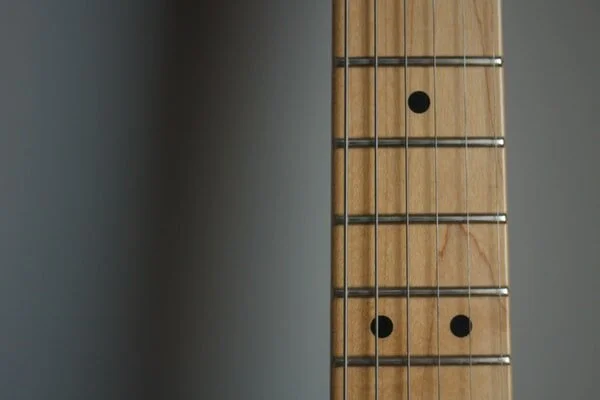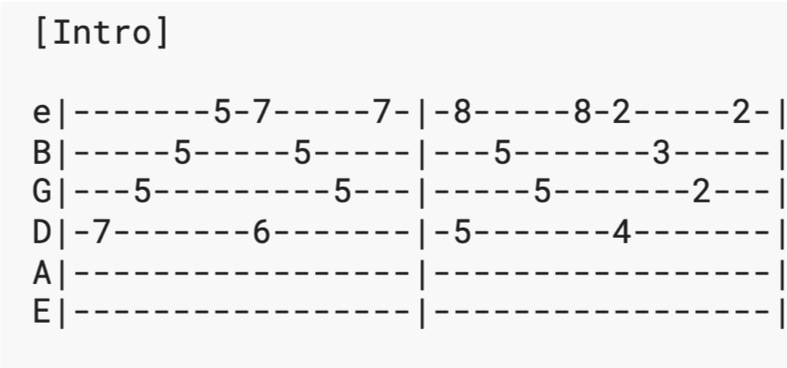By: Gavin Swift
Hi there! In this article we’re going to be answering the question:
“What are the strings on the guitar?”
If you want to become a guitar hero, there’s no doubt that the answer to this question is the first step on your journey. Luckily, learning the names of each of the strings on the guitar is fast, easy, and fun!
So, if you’re ready to face the music let’s grab our instruments and dive in!
In this lesson we’re going to learn:
Two variants commonly used to name the strings of the guitar.
Some EXTREMELY handy methods to learn and remember the names of the strings.
Some other seriously useful info that you’ll want to know in your journey with this amazing instrument!
Why should I learn the names of the strings on the guitar?
I know, I know, learning the names of the strings for the guitar sounds an awful lot like THEORY and a lot less fun than ROCKING OUT! But here’s the thing, once you’ve got this down, you are going to find it A LOT easier to learn the songs written and performed by your favourite artists.
For instance, take a look at this tab sheet to ‘Stairway to Heaven”
Take a look at those letters on the side there… I know what you’re thinking: “What are these random letters and what do they have to do with my interpretation of Led Zeppelin?!” Well my friend, the truth is, those little letters have EVERYTHING to do with your interpretation of this most excellent song. Indeed, it has everything to do with your interpretation of ANY song!
Want to learn way faster and avoid any pitfalls like injuries? Try a free in-person online lesson from one of our world class instructors today.
What are the names of the strings?
Ok let’s get into it. Those random letters in the tablature above? They ARE the string names! Let’s take a look:
E also called ‘the 1st string’. If you’re holding a guitar in playing position, this is the string FURTHEST AWAY from you. It’s also the thinnest string on the guitar, and is the highest pitch the instrument can produce by only playing an open string.
B also called ‘the 2nd string’. If you’re holding a guitar in playing position it is the string the second furthest away from you. It’s also the second highest pitch you can play on a guitar by only playing an open string and the second thinnest string!
G also called the ‘3rd string’ – the third furthest away, the third thinnest, and the third highest pitch you can make with an open string
D also called the ‘4th string’ – the fourth furthest away, the fourth thinnest, and the fourth highest pitch you can make with an open string
A also called the ‘5th string’ – the fifth furthest away, the fifth thinnest, and the fifth highest pitch you can make with an open string
E also called the ‘6th string’ – the string that is CLOSEST TO YOU, the THICKEST, and THE LOWEST PITCH you can make with an open string.
“Wait a minute, wait a minute! You’re telling me that there are TWO strings called E?!?! Isn’t that just A TINY BIT CONFUSING?!”
Yes! I’m telling you there are 2 strings called E, but don’t worry, it’s really not very confusing at all. Here’s why:
What are the differences between the 2 E-strings on the guitar?
1. The low E-String (the 6th string) is much thicker than the high E-String – approximately double the girth!
2. The difference in pitch between the high E-string and the low E-string is ONE OCTAVE.
3. They’re a whole six strings apart from each other!!!
When the strings are written out in letters (as in the Led Zep tab above) the thinner E (the 1st string) is often written ‘e’ while the thicker E (the 6th string) is written, well ‘E’.
So there we have the strings of the guitar…
… To remind you, they are:
E – 1st String
B – 2nd String
G – 3rd String
D – 4th String
A – 5th String
E – 6th String
And because the numbers and letters are used interchangeably, it’s good to know both.
WAIT A MINUTE
“What’s an open string? Are any strings closed?”
Aha! You’re a sharp one. An open string is the terminology we use to define a string played by itself, ie, with no pressure applied anywhere on the fret board by the left hand. ‘Closed strings’ aren’t really a thing, but a fretted note is the terminology we use to describe a note created by the left hand applying pressure somewhere on the fret board.
And here’s the cool thing…
Once you know the name of these strings you can work out ANY NOTE ON A GUITAR! Pretty useful thing to know right? All you have to do is:
Chose a fret number on a string
Count the number of semi-tones up from the string according to the fret you’ve chosen (a semi-tone equals one key of the piano for a handy reference). For example, let’s say you want to know the name of the note for the sixth fret on the G-string, or 3rd string. You would count: 1=G#, 2=A, 3=A#, 4= B, 5=C, and 6= C#
Et Voila! You’ve got it! The sixth fret of the G-string is a C Sharp!
But how am I gonna remember all this?!
Ah young padewan, don’t you fret one little bit. Thankfully, for all of us aspiring Santanas there are a myriad of handy mnemonics….
From the sensible:
Eat
A
Darned
Good
Breakfast
Everyday
To the silly:
Edgar
And
Donna
Got
Busted
Eloping
And of course the poetic:
Eddie
Ate
Dynamite
Good
Bye
Eddie
Why not come up with your own? Also, you’ll notice that all the examples above go from string 6 to string 1 (logical as this mirrors the physical layout of the strings) – but if it floats your boat there’s no reason you can’t go the other way!
How about…
Enid
Blighton
Grabs
Donkeys
And
Eats’em
Not sure that one’s a guaranteed hit…
Other Ways of Tuning the Guitar
Everything was going so well. We learnt the names of the strings. We learnt the order that they come in. Darn it we even learnt some really stupid mnemonics to help that information lodge firmly in brains!
And yet.
And yet.
THERE ARE OTHER WAY OF TUNING THE GUITAR
The journey to guitar mastery is a marathon, not a sprint oh student. Remember, learning the string names is only the first step on the path. Later down the line, (or even sooner) you may want to experiment with some other tuning systems! Here are a few examples:
Drop D – The most common alternate tuning system, the 6th string (the lower sounding and thicker E) becomes a D – immensely popular in folk and blues alike
DADGAD - very popular in the world of folk and all those trying to replicate Crosby, Stills, and Nash. This tuning produces a beautiful drone like quality when playing rhythm that can sound incredibly cool and trippy.
GABDEG - did someone say Dream-pop??? This tuning will take you there – strap in, Maverick.
And there’s a whole lot more. Why not explore and experiment? See how different tuning systems can inspire your sound!
And there we have it!
A brief (but incredibly informative) introduction to the strings of the guitar and a few examples of alternate tuning systems to whet your appetite for experiment. There’s only one thing left to do now….
…. Play!
Enjoy!
Gavin Swift is a film and media composer based in London, England


